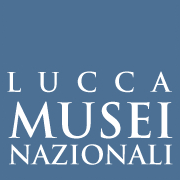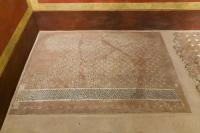The ground floor of the building, in the west wing, is dedicated to the ancient civilizations who inhabited this area. Here are presented some relevant Etruscan artifacts dating back to the eighth century BC (memorial stones and funerary objects). Then, in the following rooms, we meet some finds from the wells of Seravezza (VII-VI century BC.) Of great importance is the grave of Rio Ralletta (470 BC) composed by a magnificent Attic vase with red figures on black background, elegant golden earrings, pins, buckles, and a golden and amber necklace. Near them some small votive bronzes rediscovered from places of worship and other sacred contexts from the Serchio Valley. The domination of Ligurians (from the IV- to the III century BC) is presented by fragments of an helmet, belt buckles and bronze studs as well as the four box-shaped tombs from Marlia, with the extremely valuable equipment (pots, amber beads, buckles, rings, bracelets, weapons and vessels of different shapes); the use of flipped down amphoras exposed in the following window, documents a different burial type. The last rooms of this section are dedicated to ceramics and, in large part, to architectural fragments, originally from public contexts, private homes and from the Roman necropolis of the city of Lucca and its territory. Among them two floors in earthenware fragments and one mosaic with a sea scene. Quite significant is the marble altar decorated with ox skulls and festoons dated back to the Augustan age.





